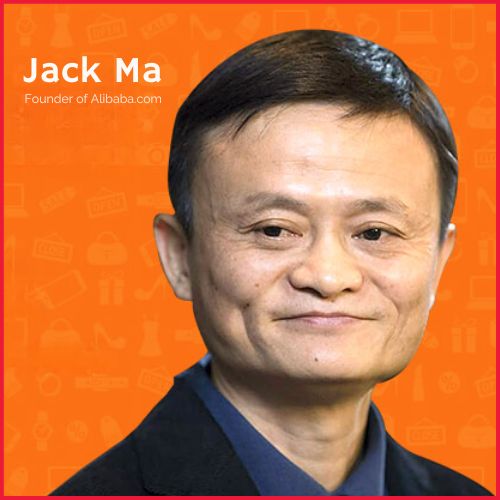When we talk about EVs the first thing that comes to our mind is Tesla, and we can say how good marketer Elon Musk is.
Tesla having a total market share of 75% in the automobile sector itself proves it’s dominance and continue to do so in the coming years.
Tesla has dominated the electric vehicle market for years in the United States. The electric vehicles manufactured by Tesla accounted for 79 percent of the new electric vehicles registered in the United States in 2020 and 69,95 percent in 2021. The decrease in the market share in 2021 might be explained by backlogs and the global chip shortage, but the company is boosting up its sales and has already increased its market share to 75 percent in the first quarter of the year.
But sometimes things do not always go uphill. We are here to discuss about 5 EVs that failed to make a mark.
List of 5 Top Failed EVs Startups
1. Fisker Automotive
Fisker Automotive was an American company known for producing the Fisker Karma, which was one of the world’s first production luxury plug-in hybrid electric vehicles. It was founded in 2007 by Henrik Fisker aiming to build elegant plug-in hybrid vehicles.
In 2009, Fisker planned for another plug-in hybrid, a “high-volume vehicle for a lower price“, subject to getting a U.S. Department of Energy loan to build about 100,000 vehicles annually in the United States.
A conventional electric car that you could plug in. If you wanted a little boost, there was a GM-sourced gas engine under the hood that acted as a generator. Unfortunately, the high price, bad ergonomics and not-exactly-great build quality meant the Karma didn’t take off. Its revival is doing a little better, though.
Fisker Karma suspended its production in November 2012 due to bankruptcy of its battery supplier A123 systems. Over 2,450 Karmas have been built since 2011 and over 2,000 cars sold worldwide.
“Whatever the Energy Department’s internal assessment or view might have been, we certainly weren’t giving them different information or different forecasts than we were providing to our own investors,” one of the executive told Reuters in late May 2013.
Market has changed in the past five years. Elon Musk and his Teslas have revolutionized the concept of an all-electric car. Giant companies like BMW and Porsche are also taking the eco-friendly route. It makes the hill that much steeper for the new Karma Revero to climb. Surprisingly, it has many of the same qualities as the original Fisker Karma, with one main upgrade—it doesn’t break down.
2. Think City
Norwegian automaker Think Global’s intentions were all in the right place when it came to this little EV, the City. When production started in 2010, it was one of only a handful of electric cars that were highway certified.
It was one of only five crash-tested, mass-produced, and highway-certified electric cars in the world, together with the Mitsubishi i-MiEV, the Nissan Leaf, the Smart ED and the Tesla Roadster.
The car had a 24 kWh traction battery and inbuilt charger, and it would re-charge from a standard 230 volt, 10 or 16 amp supply in 9.5–10 hours.The list price for the car in Norway was 244,000 kr before optional features, which is approximately US$38,000,
It was initially planned to start deliveries to Norwegian customers from October 2007. They failed to keep up with the expectations, target was missed, but as of August 2008 some 100 electric cars had been manufactured for customers in Norway.
Th!nk City stopped its production in March 2011 due to financial difficulties, and the company filed for bankruptcy on June 22, 2011, for the fourth time in 20 years. Think Global was purchased soon after by Electric Mobility Solutions AS, which announced production to resume in early 2012 with a refined Think City. However, production never resumed, and the Indiana plant completed its final car in August 2012.
3. Dyson
Dyson is a brand well-known for its vacuums, and its hair dryers. James Dyson, the founder of Dyson, took up the challenge to create his own Dyson Electric Car. Yet, he quickly pulled the plug for many reasons.
It may not have been a well-suited venture for the vacuum and hairdryer pro, and many people wonder why. Electric vehicles are tricky to master, especially if you want them to sell well against their many competitors. When you are up against the likes of Tesla, Porsche, and Audi, we imagine it can be pretty formidable.
New business ventures that aim to become financially successful require financial backing. However, James Dyson couldn’t find any backing from any of the financial institutions for his Dyson electric car concept. The idea failed and James Dyson had to back off.
Dyson Group wanted to create an electric car that could offer around 300 miles in range while being well designed and futuristic. Dyson wanted to try something new and use his knowledge of solid-state batteries,unlike other EV companies that use lithium batteries. The aim was to have longer range cars backed up by solid-state batteries.
Inefficient batteries and pillar less financial plans didn’t quite follow through with Dyson electric cars. Should he have found the right financial backing and not get too ahead of himself, maybe the concept would have been a huge success. Until then, we will be left waiting to see if Dyson has mastered his plan.
4. Coda
Coda took a different path; Instead of building a car from scratch, it reengineered an existing model, the Chinese Hafei Saibao, to run on electricity. The chassis of the Hafei Saibao was based on the late 1990s version of the Mitsubishi Lancer, a fine but totally unremarkable car.
The result, as Jim Motavalli at Plugincars wrote, was “a witheringly expensive battery car that looked like a 1988 Toyota Corolla.”
Startup electric automaker Coda, which filed for bankruptcy in May 2013, managed to sell only about 100 units of its only model.
Bloomberg Business News then said,”Los Angeles-based Coda Holdings is seeking to sell its assets to a publicly traded private equity group, Fortress Investment Group, for $25 million. It listed assets of up to $50 million and debt of $100 million.”
On its website, Coda said,”Focusing on the company’s energy storage business presents the best opportunity moving forward,” said Phil Murtaugh, CEO of Coda Holdings. “We believe the restructuring process that we have entered into today will enable the company to complete a sale and confirm a plan that maximizes the value of its assets, serving the best interests of our stakeholders.”
5. LeEco
A Chinese company founded by Jia Yueting, the founder of Le.com.This is the story of a company that grew very fast. Chinese tech company LeEco, had thought of building a company that would become a global leader in electric cars, digital streaming, and smart devices. The company was starving for growth without a solid financial foundation itself shows how an organisation can cause a business to topple. Simply tracing LeEco’s cash flow is a Herculean task, since its financial activity is obscured by a dizzying organizational structure comprising a publicly listed holdings company, privately owned organization and dozens of subsidiaries.
LeEco’s rapid expansion after its 2010 listing was impressive. In a few years, it broadened its offerings from an online streaming service to an ecosystem of hardware, including smart TVs, smartphones, bicycles and cars. This kind of diversification requires a sizable injection of cash, which is reasonable if a company is making money.
LeEco was able to continue operations for as long as it did without getting into any real legal trouble. Eventually, several lawsuits were slammed after 2016.
“Many Silicon Valley startups rely on venture capital funding for years before even turning a profit. Snap Inc. and Uber report hundreds of millions in losses each year as they continue to survive on investments. But Uber focuses on ride-sharing and self-driving cars, while Snap has kept its hardware efforts limited. LeEco, on the other hand, had expanded on so many fronts that, rather than behaving like one startup, it behaved like seven. Neither Uber nor Snap has been sued for unpaid bills or reported to be behind on payments to contractors yet either,” reported in an article.
LeEco got troubled by cash shortages and questioned about accounting practices, LeEco took on emergency funding and handed over the control to a new management team.
While some of the names on the list were seriously underfunded, others generated plenty of cash.
Also Read More-
UK’s BII and M&M join hands to set up an electric vehicle production entity
Dutch startup introduces world’s first solar electric car, months of charge less driving
Ola Electric app is ready for ‘MoveOS 2.0,’ according to Bhavish Aggarwal














